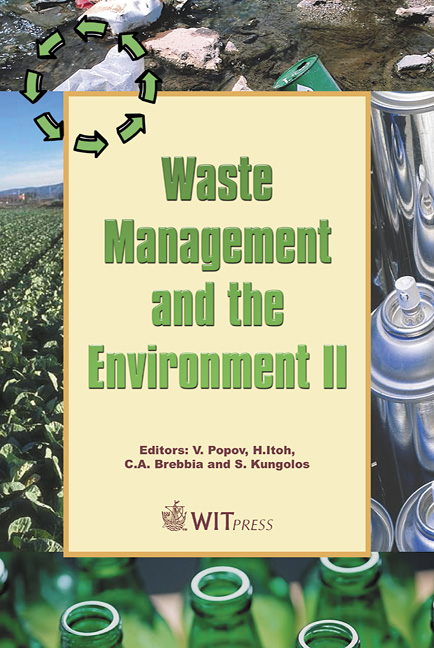Synchronous Municipal Sewerage-sludge Stabilization
Price
Free (open access)
Transaction
Volume
78
Pages
6
Published
2004
Size
609 kb
Paper DOI
10.2495/WM040241
Copyright
WIT Press
Author(s)
G. Bukuru, J. Yang & W. Min
Abstract
A study on a pilot plant accomplishing synchronous municipal sewerage-sludge stabilization was conducted at a municipal sewerage treatment plant. Stabilization of the sewerage and sludge is achieved in three-step process: anaerobic reactor, roughing filter and a microbial-earthworm-ecofilter. The integrated eco-filter utilizes an artificial ecosystem to degrade and stabilize the sewerage and sludge. When the hydraulic retention time (HRT) of the anaerobic reactor is 6h, the hydraulic load (HL) of the bio-filter is 16 m3/m2.d, the HL of the eco-filter is 5 m3/m2.d, the recycle ratio of nitrified liquor is 1.5, and the removal efficiency is 83-89% for CODcr, 94-96% for BOD5, 96-98% for SS, and 76-95% for NH3-N. The whole system realizes the zero emission of the primary settling sludge, and has the characteristics of saving energy consumption and operational costs. Keywords: municipal sewerage, microorganisms, sludge, earthworms, synchronous treatment. 1 Introduction The main purpose of wastewater treatment is to remove solids and BOD from the wastewater before the liquid effluent is released to a convenient, near by body of water. What remains to be disposed of is a mixture of solids and water, called sludge. The collection, processing, and disposal of sludge can be the most costly and complex aspect of wastewater treatment. Many developing countries can’t afford the cost of the sludge wasting line. Therefore the aim of the research was to develop a system that can simultaneously achieve wastewater and sludge stabilization using innovative and clean technology that involves minimum capital expenditure.
Keywords
municipal sewerage, microorganisms, sludge, earthworms, synchronous treatment.





